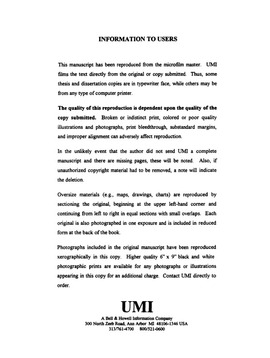| dc.contributor.advisor | Deming, David, | en_US |
| dc.contributor.author | Lee, Youngmin. | en_US |
| dc.date.accessioned | 2013-08-16T12:30:41Z | |
| dc.date.available | 2013-08-16T12:30:41Z | |
| dc.date.issued | 1999 | en_US |
| dc.identifier.uri | https://hdl.handle.net/11244/5848 | |
| dc.description.abstract | Chapter three addresses heat flow and thermal history of the Anadarko Basin and the western Oklahoma Platform. We found no evidence for heat flow to increase significantly from the Anadarko Basin in the south to the Oklahoma Platform to the north. | en_US |
| dc.description.abstract | Geopressure models which invoke compaction disequilibrium do not appear to apply to the Anadarko Basin. The Anadarko Basin belongs to a group of cratonic basins which are tectonically quiescent and are characterized by the association of abnormal pressures with natural gas. (Abstract shortened by UMI.) | en_US |
| dc.description.abstract | In chapter one, heat flow and heat production in the Arkoma basin and Oklahoma Platform are discussed. Results of this study are not generally supportive of theories which invoke topographically driven regional groundwater flow from the Arkoma Basin in Late Pennsylvanian-Early Permian time (∼ 290 Ma) to explain the genesis of geologic phenomena. | en_US |
| dc.description.abstract | One of the most fundamental physical processes that affects virtually all geologic phenomena in sedimentary basins is the flow of heat from the Earth's interiors. The Arkoma Basin and the Anadarko Basin, Oklahoma, are a prolific producer of both oil and natural gas. Both basins also have important geologic phenomena. Understanding the thermal state of the these basins is crucial to understanding the timing and extent of hydrocarbon generation, the genesis of Mississippi Valley-type ore deposits, and the origin of overpressures in the Anadarko Basin. | en_US |
| dc.description.abstract | In chapter four, overpressures in the Anadarko Basin, southwestern Oklahoma are discussed. Using scale analyses and a simple numerical model, we evaluated two endmember hypotheses (compaction disequilibrium and hydrocarbon generation) as possible causes of overpressuring. | en_US |
| dc.description.abstract | In chapter 2, different types of thermal conductivity temperature corrections that are commonly applied in terrestrial heat flow studies are evaluated. The invariance of the relative rankings with respect to rock porosity suggests the rankings may be valid with respect to in situ conditions. | en_US |
| dc.format.extent | xii, 180 leaves : | en_US |
| dc.subject | Geology. | en_US |
| dc.subject | Terrestrial heat flow. | en_US |
| dc.subject | Sedimentary basins Oklahoma. | en_US |
| dc.subject | Geophysics. | en_US |
| dc.title | Thermal state of the Arkoma Basin and the Anadarko Basin, Oklahoma. | en_US |
| dc.type | Thesis | en_US |
| dc.thesis.degree | Ph.D. | en_US |
| dc.thesis.degreeDiscipline | Conoco Phillips School of Geology and Geophysics | en_US |
| dc.note | Major Professor: David Deming. | en_US |
| dc.note | Source: Dissertation Abstracts International, Volume: 60-08, Section: B, page: 3815. | en_US |
| ou.identifier | (UMI)AAI9940290 | en_US |
| ou.group | Mewbourne College of Earth and Energy::Conoco Phillips School of Geology and Geophysics | |
